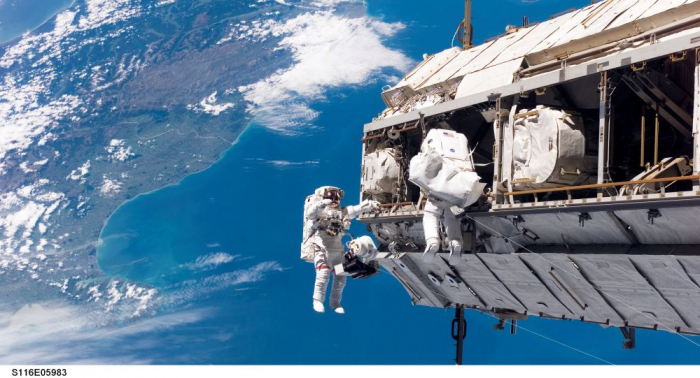Member of NASA's Astronaut Corps and Clinical Associate Professor of Medicine Serena Auñón-Chancellor from the LSU Health New Orleans School of Medicine and a team of researchers have revealed previously unknown risks for participants of long-duration space travels, Phys.org reports. According to their study paper, published in the New England Journal of Medicine, an astronaut, working on the International Space Station (ISS) was discovered to have a clot in the internal jugular vein, or internal jugular venous thrombosis, which is said to be the result of stagnant blood flow.
"These new findings demonstrate that the human body still surprises us in space. We still haven't learned everything about Aerospace Medicine or Space Physiology", the astronaut/doctor said.
As the report points out, nobody in the astronaut’s family is known to have had such blood clots. This ISS crew member had also not complained about headaches or florid complexion, while these are common in zero-gravity.
The astronaut was one of 11 crew members who took part in the study, which looked into the internal the state of their jugular veins, namely its structure and function, as all of them have to endure headward shifts of blood and other fluids.
During the mission, they underwent ultrasound examinations in different positions under a special schedule. At one of these, carried out two months after their trip started, the astronaut was suspected of having a blood clot in the left internal jugular vein thrombosis, which was later confirmed during a follow-up procedure.
As the report points out, it was the first time that NASA had registered such a condition, which prompted specialists to weigh the risks of anticoagulation therapy in space conditions or the clot blocking a vessel, which could kill a person. Additional difficulties were linked to challenges of using syringes in microgravity and the lack of anticoagulation-reversal agents, which should be paired with a blood thinner available on board.
Nevertheless, the object of the study started the injections with the available blood-thinner enoxaparin, while anticoagulation-reversing drugs were later sent by a supply spacecraft along with an oral medication. Although the therapy resulted in the reduction of the clot, even 90 days of treatment could not restore the spontaneous blood flow. So, the astronaut took the medication until his return to Earth.
The ultrasound following the return revealed that there was still a flattened clot, which was gone, however, 10 days after landing. Even six months after landing, the astronaut showed no symptoms. However, the newly-discovered risks still need further research, which could be critical for future travellers to Mars or other long missions.
"The biggest question that remains is how would we deal with this on an exploration class mission to Mars? How would we prepare ourselves medically? More research must be performed to further elucidate clot formation in this environment and possible countermeasures", she explained.
More about: #Spaceflight
























-1745485667.jpg&h=190&w=280&zc=1&q=100)























